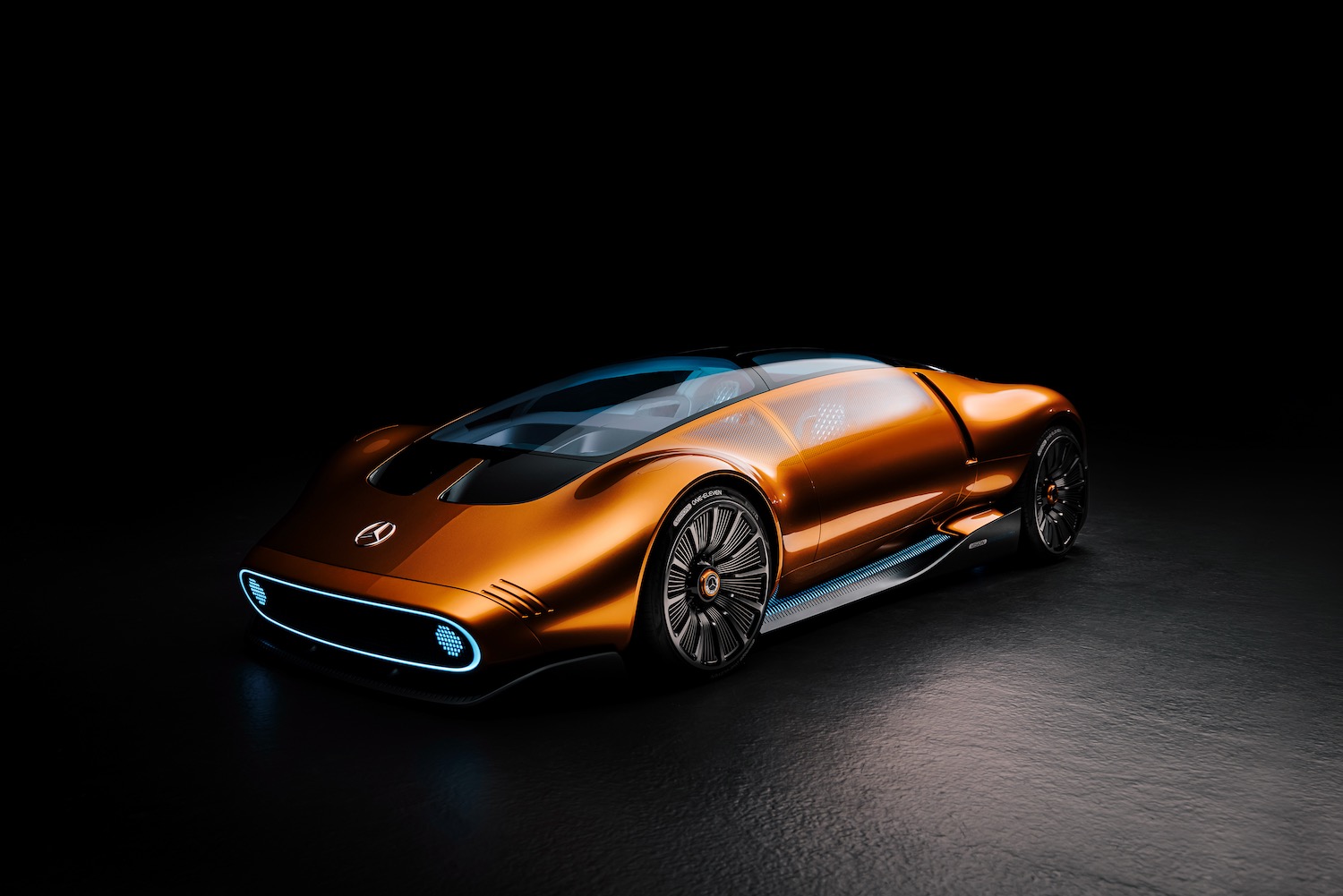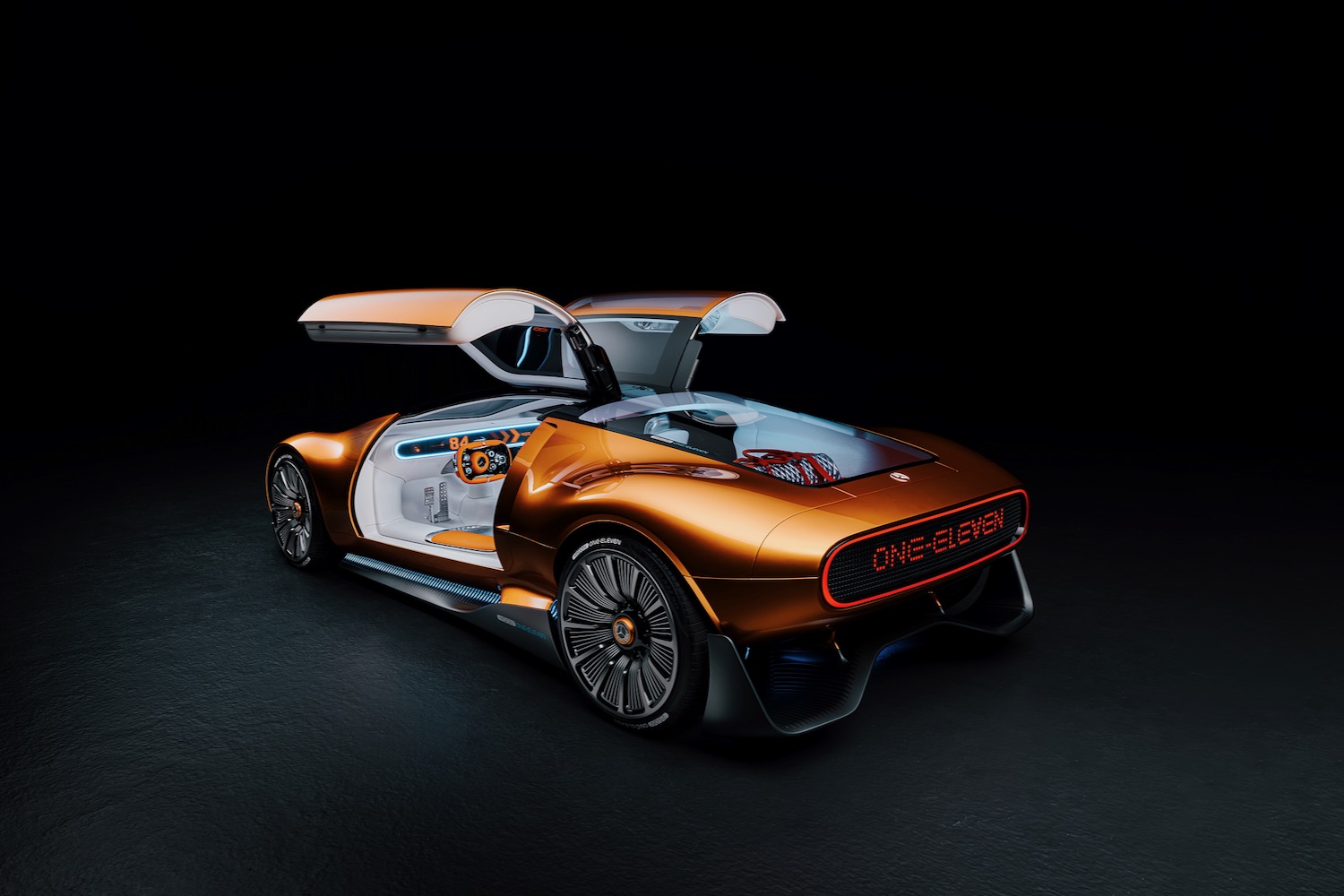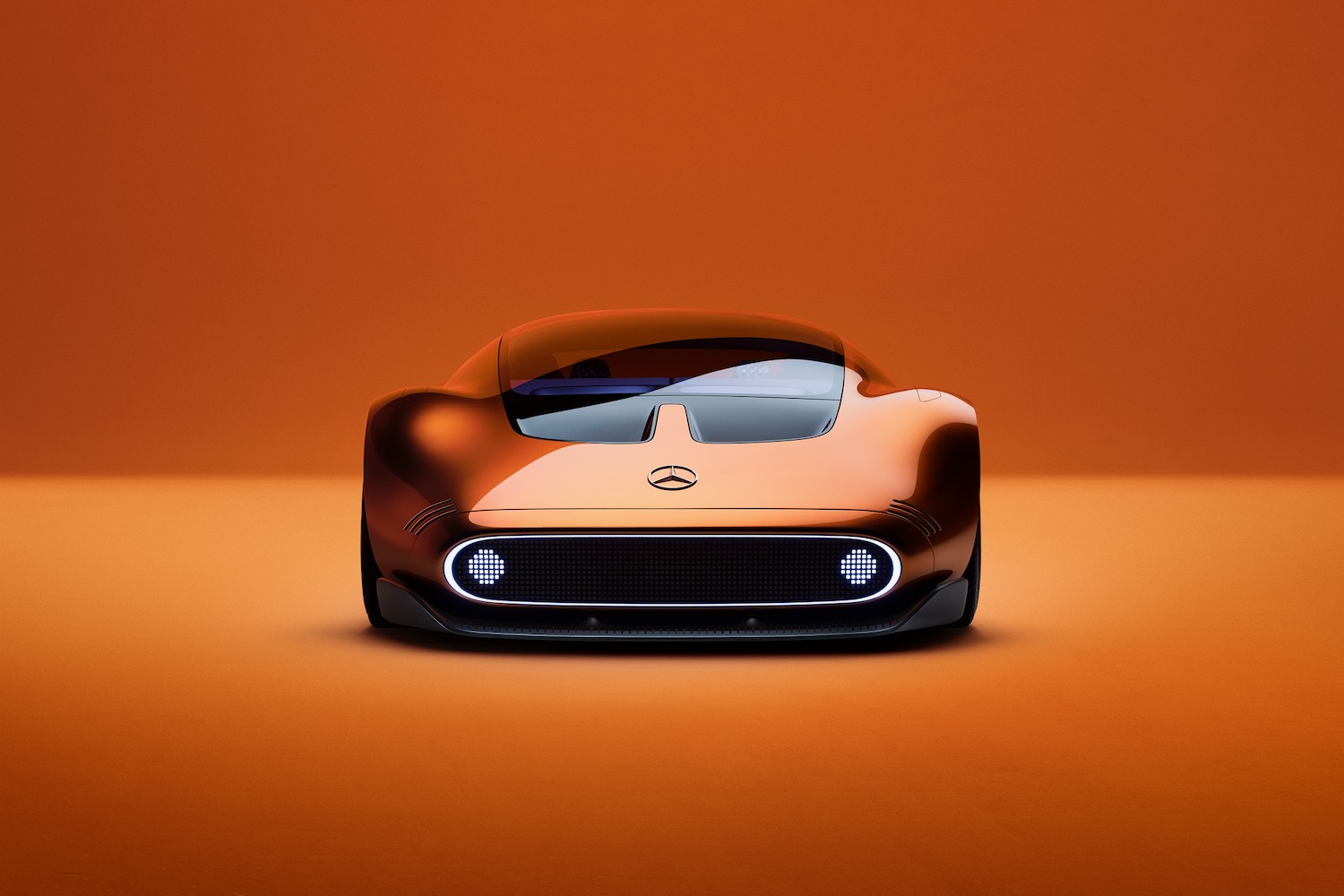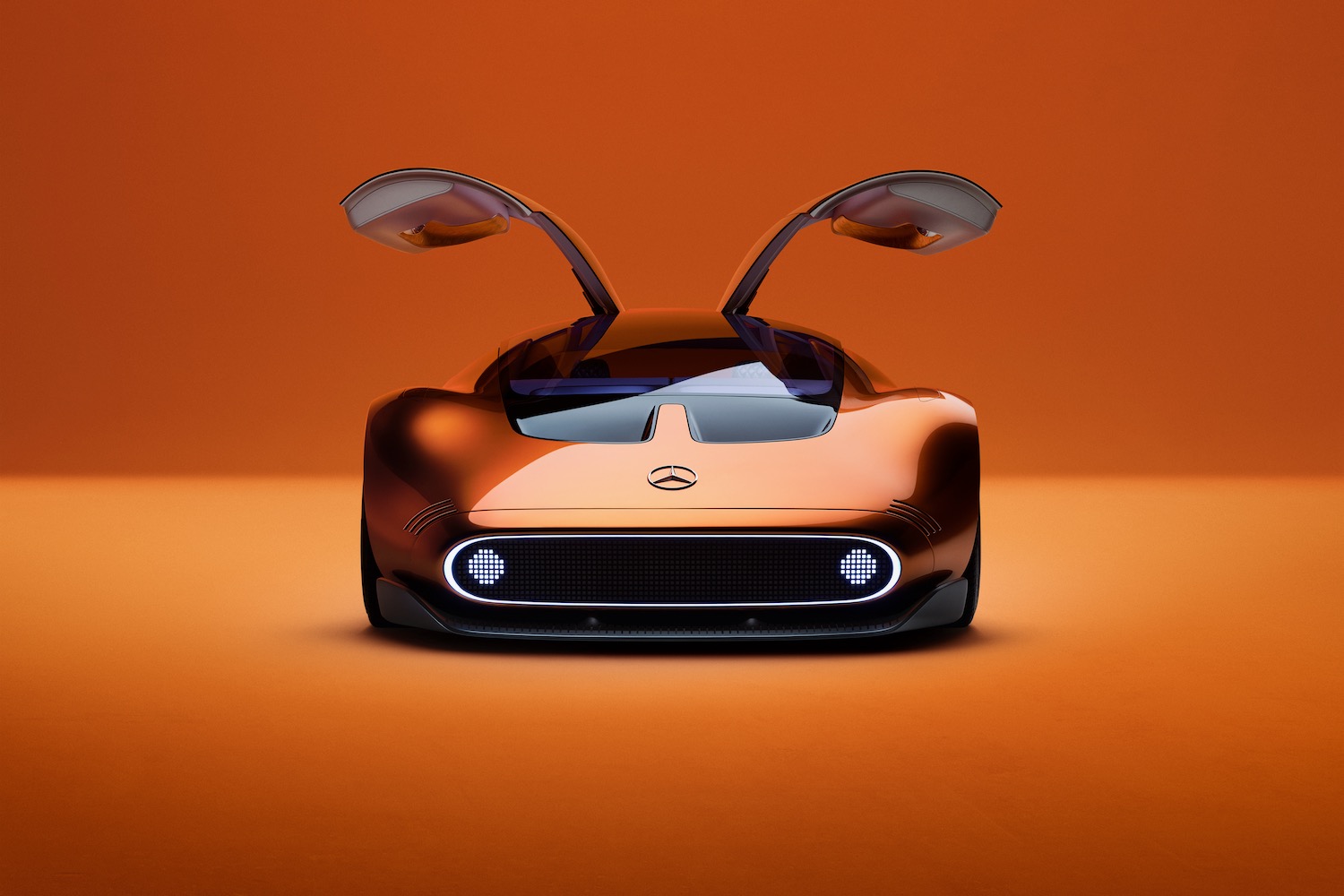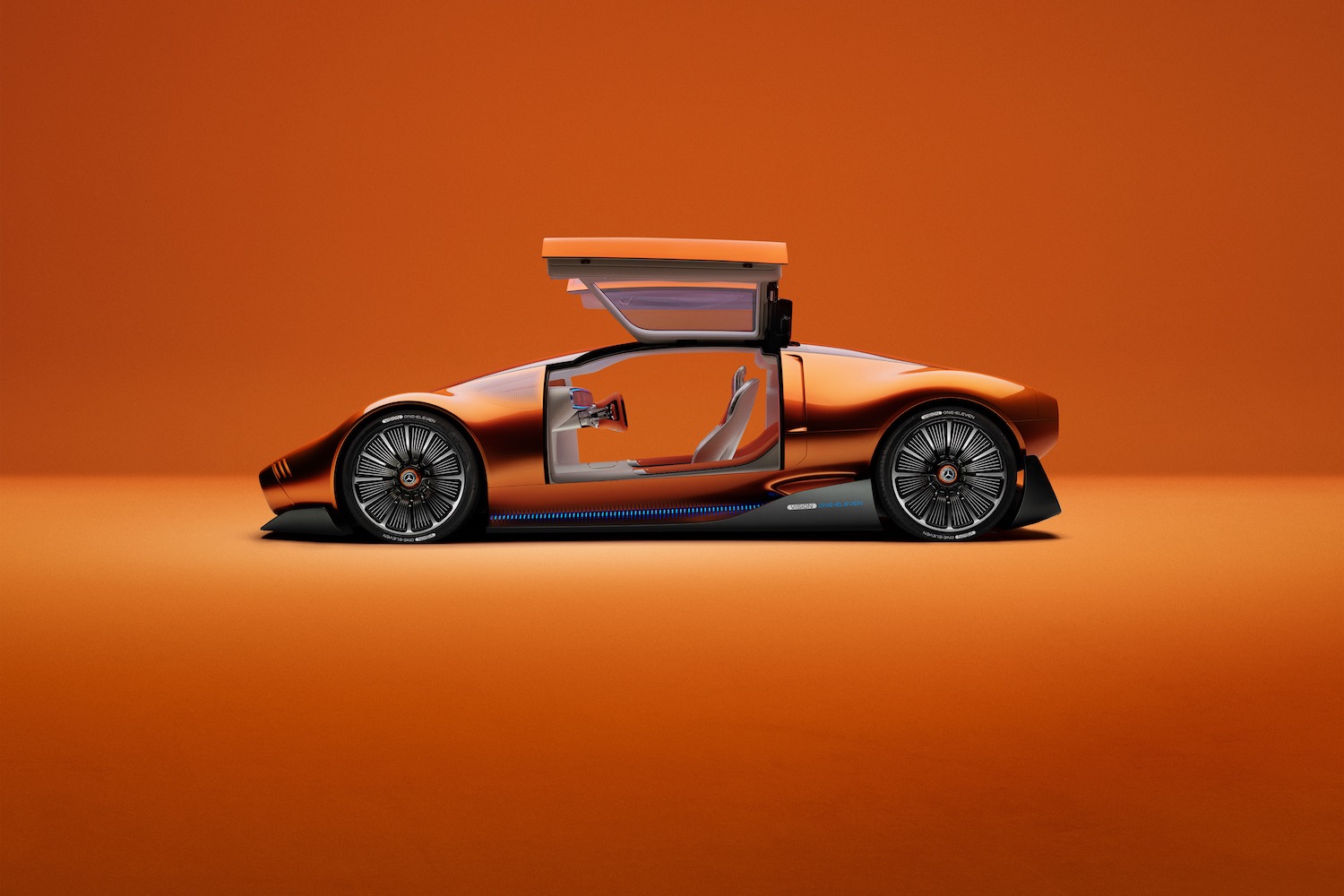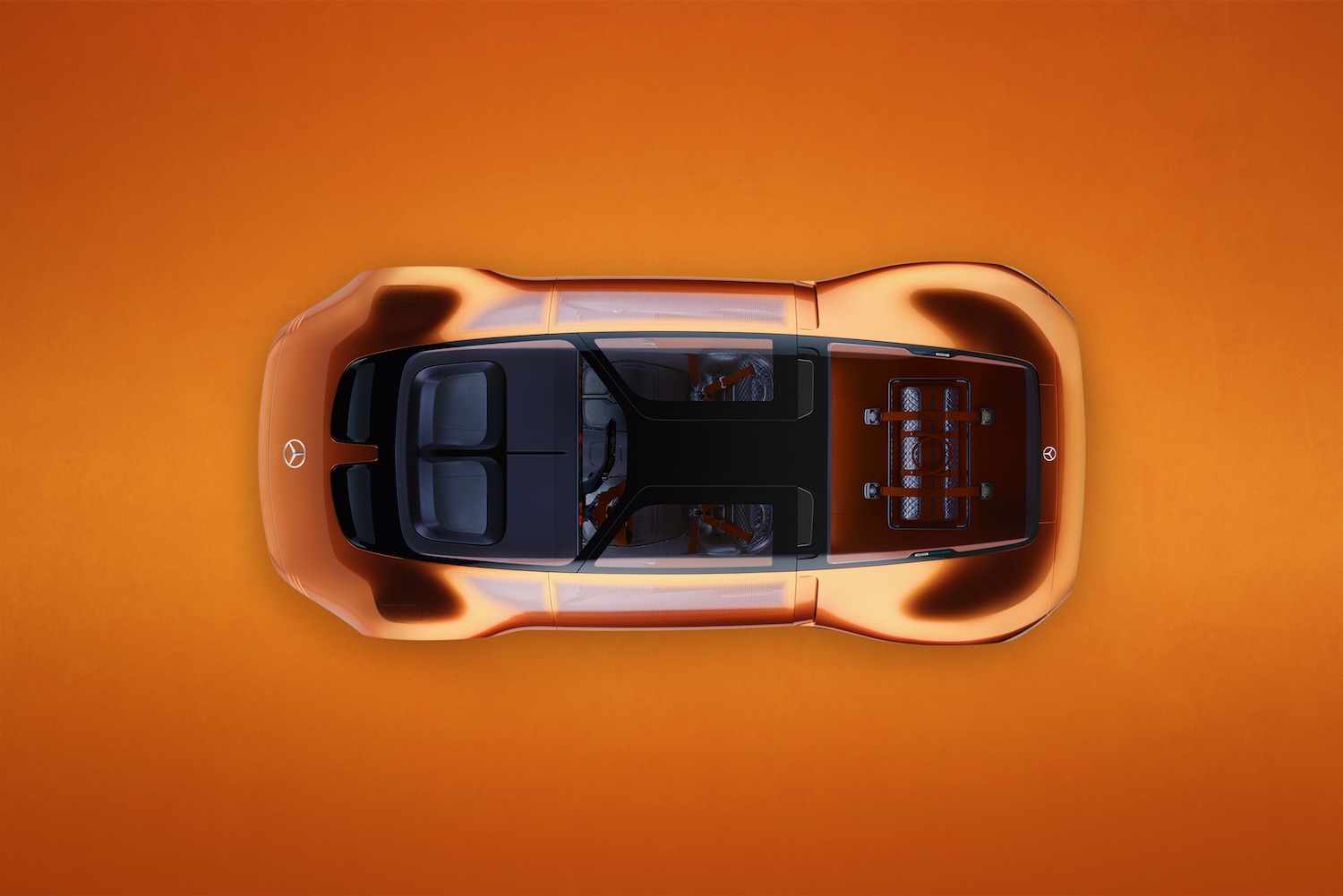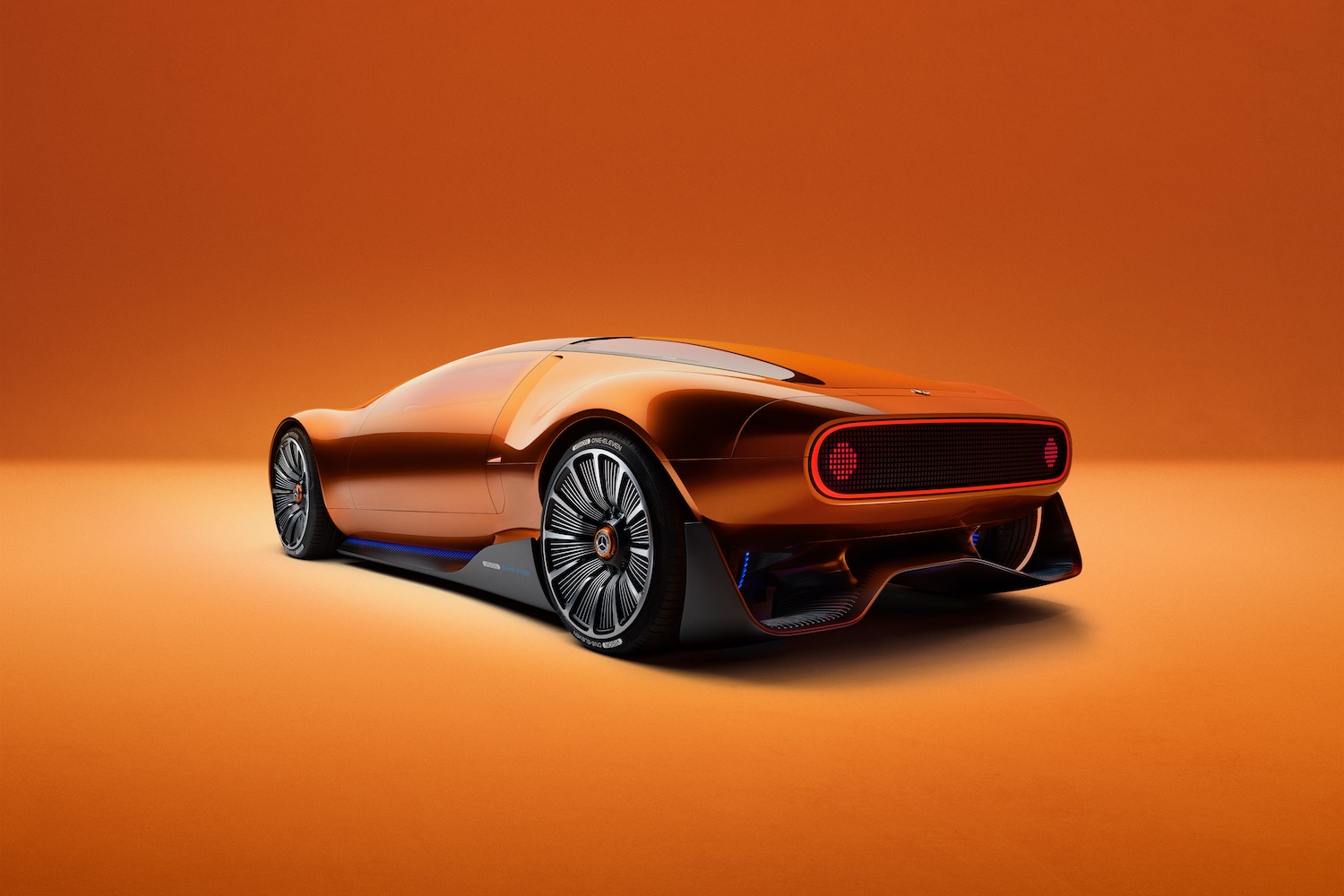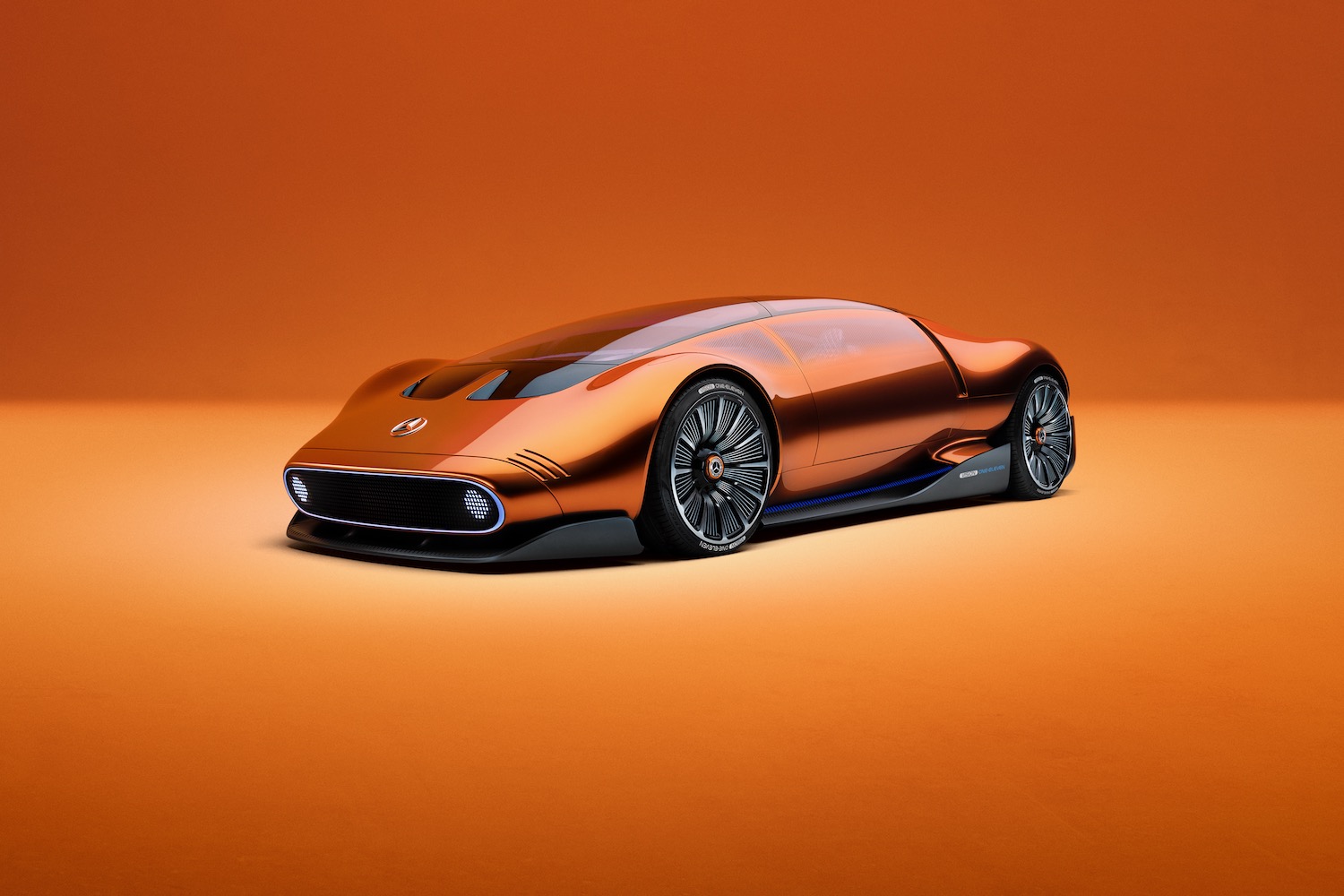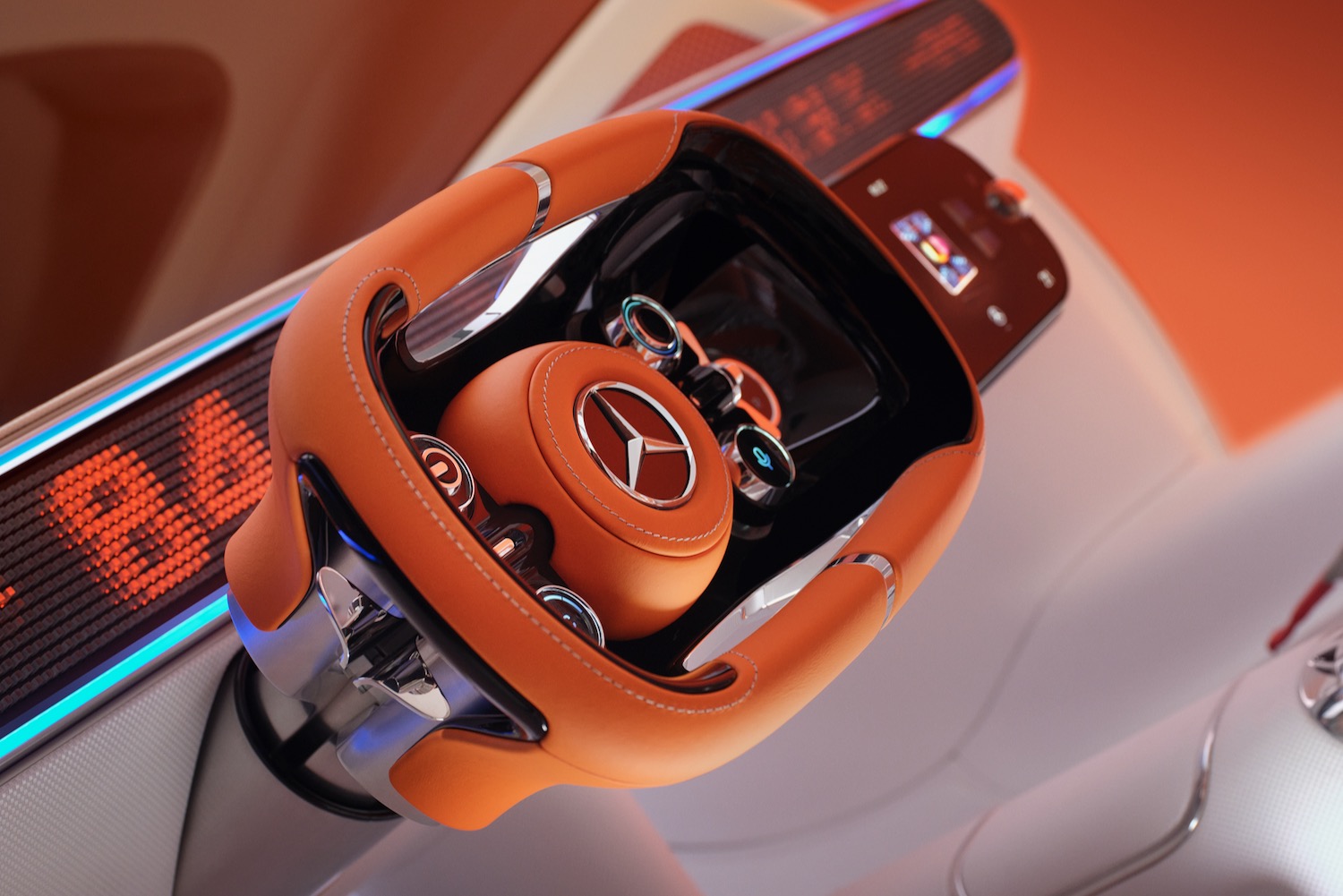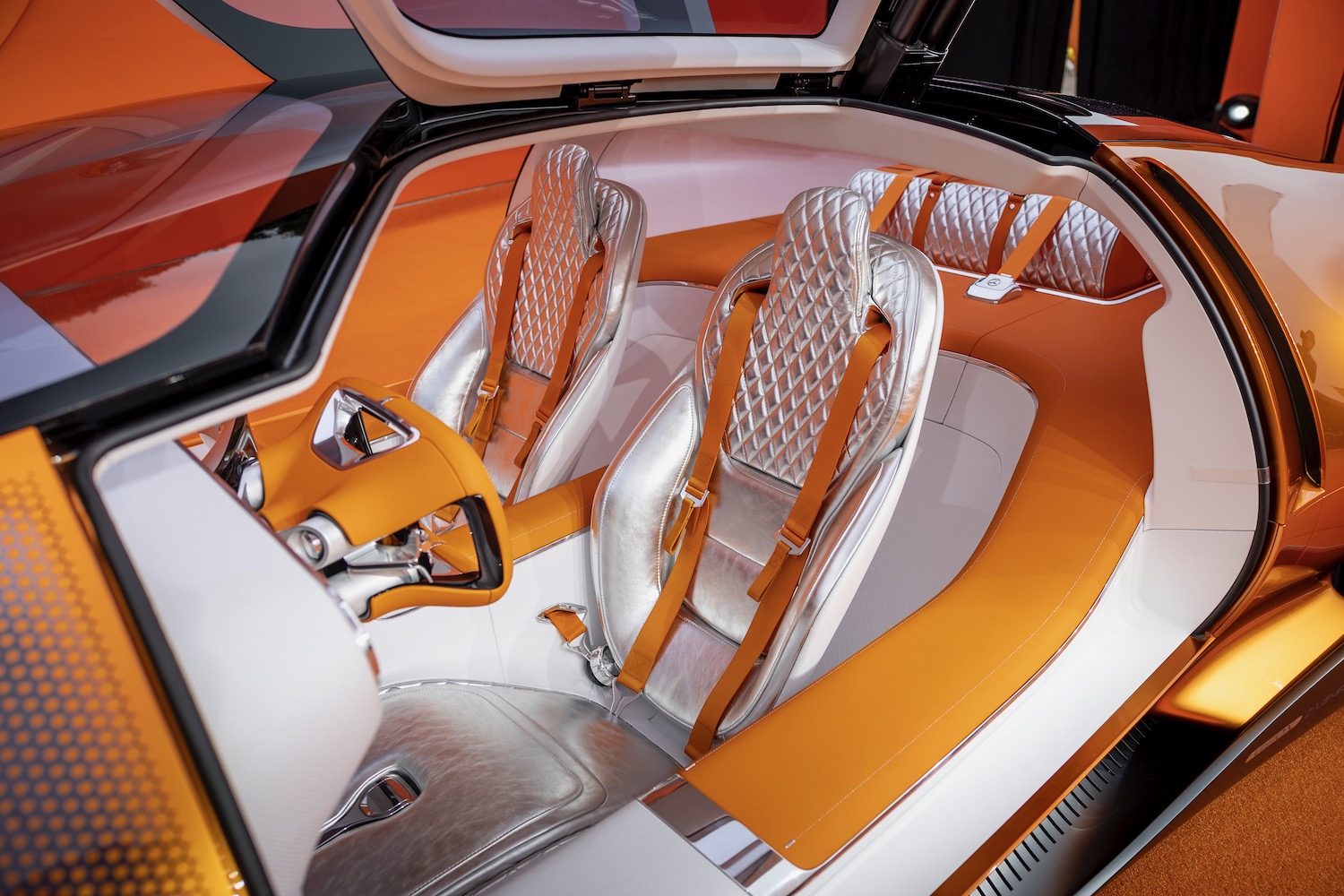
Mercedes-Benz this week unveiled a new electric concept car that looks back as well as forward. It’s called the Vision One-Eleven, and it’s a reminder that car designers have a long history of predicting the future.
The Vision One-Eleven is inspired by the C111 series of experimental vehicles that first appeared in 1969. With their aerodynamic styling, roof-hinged gullwing doors, and distinctive orange paint, the C111 cars became fixtures of auto show stands and car-magazine features throughout the 1970s. They were more than show cars, though, testing then-trendy ideas like fiberglass body panels and rotary engines.
The supercar-like styling of the original C111 cars is reproduced here, but the Vision One-Eleven is no replica. Like its predecessors, the new concept car is a low-slung (it stands just 46 inches tall) two-seater with gullwing doors. But designers also made some updates, including pixelated lighting elements in the shape of the round C111 headlights, and rounded sides that give the Vision One-Eleven an almost airplane-like quality. And like seemingly every new car, the Vision One-Eleven is also quite a bit larger than its predecessor.
The interiors of the C111 test cars were basic but functional, and that’s also true of this 21st-century tribute, for the most part. The seat cushions are attached directly to the floor, but the seats themselves are upholstered in silver leather, which makes for quite a contrast with the orange exterior. The leather-wrapped aluminum steering wheel also has the same array of buttons as any modern Mercedes, controlling infotainment functions even the forward-thinking designers of the C111 couldn’t imagine.
In the Vision One-Eleven, most of those functions are controlled via augmented reality, which is designed to highlight points of interest outside the car’s windows or eliminate blind spots with an “X-Ray” function that lets the driver “see” through the roof pillars, doors, or hood. However, right now it only works with a Magic Leap 2 AR headset.
The original C111 prototypes tested a variety of internal-combustion engines, but Mercedes now views electric motors as the future. So the Vision One-Eleven uses axial-flux motors which, in addition to having a futuristic-sound name, are one-third lighter than a conventional motor and one-third smaller, according to Mercedes. Electricity is supplied by a battery pack developed with expertise from Mercedes’ Formula One powertrain division.
Like the C111 cars, the Vision One-Eleven is meant to demonstrate that Mercedes is on the cutting edge of technology. Unlike those cars, the Vision One-Eleven is more for show. Unlike the Vision EQXX, for example, Mercedes has no plans to build a fully-working Vision One-Eleven that can be driven on real-world roads. More concept car than development vehicle, it’s a retro-futuristic wrapper for tech we might see on future Mercedes production vehicles — but a good-looking one, for sure.
Editors' Recommendations
- Mercedes-Maybach EQS SUV is old-school luxury — electrified
- Mercedes is finally bringing an electric van to the U.S.
- Mercedes EV charging hubs are coming to North America by the end of the decade
- We need more 7-passenger EVs, but the 2023 Mercedes EQS SUV has room to improve
- Lux and refreshingly livable, Mercedes’ EQE moves EVs mainstream
